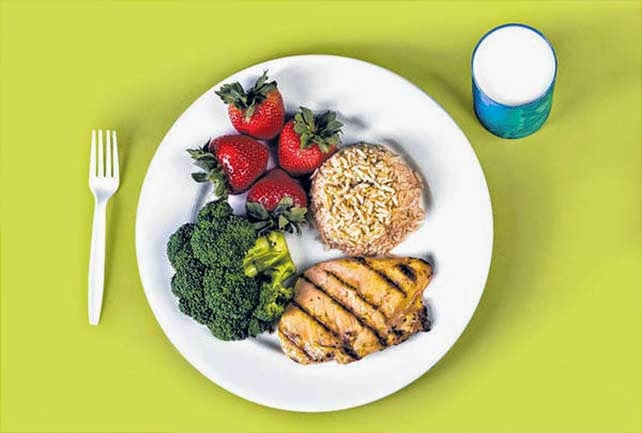

Creating a healthy plate begins with the plate itself. Studies have shown that individuals who use smaller plates tend to eat less at mealtime. I recommend using a 9-inch plate. If your plate is a little larger than 9 inches, Thta's ok. Just make sure to use the center portion of the plate and not allow the food to encroach the outside lip.
Now that we've established the boundaries, let's talk about what we are going to put on it.
- Fill half of your plate with fruits and/or non-starchy vegetables like broccoli, cauliflower, brussel sprouts, squash, zucchini, asparagus, etc. Bake, broil, or steam your veggies without any added fats to help keep them low in calories and full of nutrients. When I put this into practice at dinner, my steamed vegetable medley can be less than 100 calories!
- Fill one quarter of your plate with either starchy vegetables like carrots or potatoes or whole grains such as whole-grain rice, quinoa, or couscous.
- Fill the last quarter of your plate with a lean protein source. Using this amount of space for your protein should help guide you in the direction of choosing the right portion size, which is 4 to 6 ounces.
Assembling your meal in this manner is referred to as using the "My Plate” method. This model has replaced the food pyramid that many of us grew up with.
“All things in moderation.” Really!
This is the answer that one of my professors used to give when students would ask… “Can __________ be a part of a healthy diet?” I heard this answer quite often in school and it is stuck with me because it is sound advice.
When clients come to me, many of them often think that I'm going to tell him that they can no longer have the treats and calorically dense foods that they love. For the most part, this is simply not true! Sometimes, I have to be the "food police," but most of the time I am able to help them fit these foods that they like into their diets. It may not be in the quantities that they used to eat or the frequency, but most of the time we can still work them in.
However, sometimes it may come at a price. When someone is on a very low-calorie diet to lose weight, there is less wiggle room to fit these items in their plan. So I tell them they can still include these items, but it may slow down their weight loss progress. More often than not, they choose to reduce the frequency of or eliminate these “treats” in order to accelerate weight loss!
Just remember…
“Nothing tastes as good as being healthy feels!”



